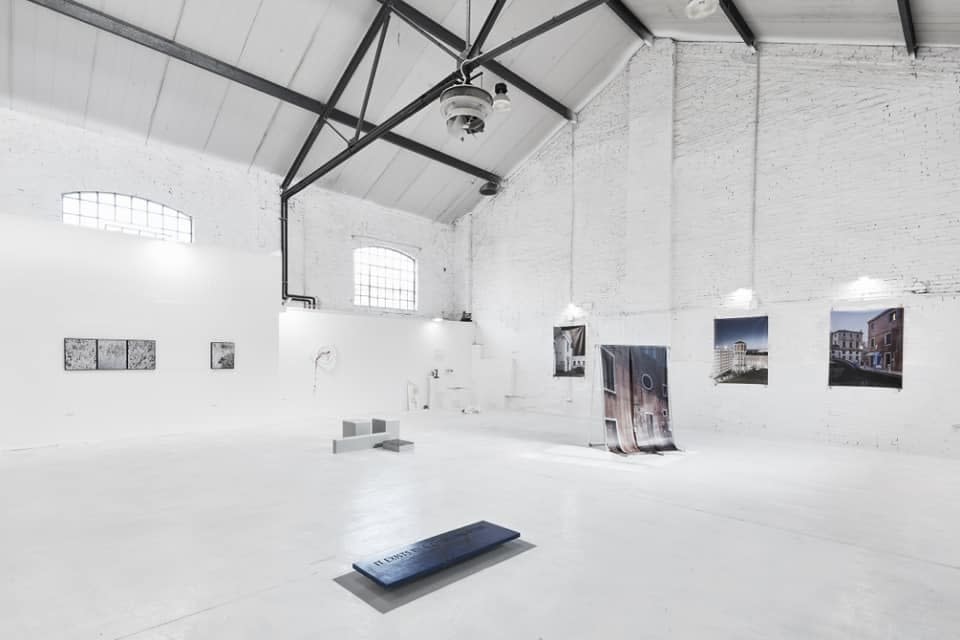Venice's Guidecca Is Opening a New Arts District—Just in Time for the Biennale
When most travelers think of Venice, gondolas, pigeons, and crowds come to mind. But the floating city’s best-kept secret is Giudecca, a peaceful island just a five-minute Vaporetto ride from San Marco Square. Though the island is historically known as a site for industry—it also once had a film studio—it will soon boast a new district for artists, fittingly called the Giudecca Art District. On the revitalized island, expect to see pop-up contemporary art exhibitions in over a dozen underused spaces such as old churches, factories, and warehouses.
“When you walk around art exhibitions in Venice, they’re often in elegant, baroque palaces,” Valentina Gioia-Levy, who co-founded the quartier with Pier Paolo Scelsi, tells AD PRO. “Giudecca has spaces that are quite unusual for the city, but Venice is not just glassblowing on Murano, it goes beyond that.” Opening May 8, the first exhibition features 60 artists in various exhibits across the island, which coincides with the 58th Venice Biennale of Contemporary Art, beginning May 11.
“We wanted to create new spaces for exhibiting art,” says Gioia-Levy. Those efforts started last year, when Gioia-Levy visited Giudecca and was delighted to find a slower pace from the main island. “It was a real discovery when I found this island,” she adds. “It’s so different from the rest of Venice.” The island is mostly known for its five-star luxury hotels, like the Bauer Palladio Hotel and the Belmond Hotel Cipriani—a haven for celebrities during the Venice Film Festival. But it has a culture of its own, boasting the Casa dei Tre Oci, a photography gallery in a neo-Gothic building built by 20th-century artist Mario De Maria. It also has the Giudecca 795 Art Gallery, set in a 16th-century palazzetto, and the Zuecca Project Space, where Ai Weiwei had an exhibit in 2013. Soon, the island will host the national pavilions for Estonia and Iceland.

Historically, Giudecca housed industries that couldn’t fit on to the main island—from gondola reparation to construction and cabinet-making. “This is where craftsmen would repair boats and where wood and iron objects were built,” says Gioia-Levy. “It’s a different layer of Venetian life.” The new art district’s forthcoming exhibit is called “Take Care of Your Garden,” which is inspired by Voltaire’s book Candide, a French literary classic from the Enlightenment.
“This 18th-century book is about optimists, inner value,” she says. “We’re focusing on the inner self, the body, identity, and the other.” One of the exhibits includes the Starak Foundation’s group show of young Polish artists entitled “Force Field” at Officine 800, an ancient salt warehouse, alongside exhibitions at Studio La Città and Le Zitelle, a 16th-century church built after the plague.
Across Venice, roughly 50,000 Giudecca Arts District maps will be distributed around the city, detailing which spaces will have pop-up exhibits, events, and art tours. During off season, there will be an exhibition at their main space, One Contemporary Art, a barn-like warehouse that is steps away from the Redentore Vaporetto stop. The island is not only a quiet haven but also an alternative to the high costs countries have to pay in order to participate as part of the main island’s Biennale. According to Gioia-Levy, a small pavilion exhibition space there can cost up to $250,000 for a six-month period.
“It’s hard for countries that don’t have many resources to spend that much on a project like this; it’s more affordable on Giudecca,” she notes. And despite its growing attention, Giudecca likely won’t be overrun with tourists anytime soon. “This is not where mass tourism is—no blockbuster exhibitions are here,” says Gioia-Levy. “But we are hoping to bring more people to the island, people who love the arts.”

